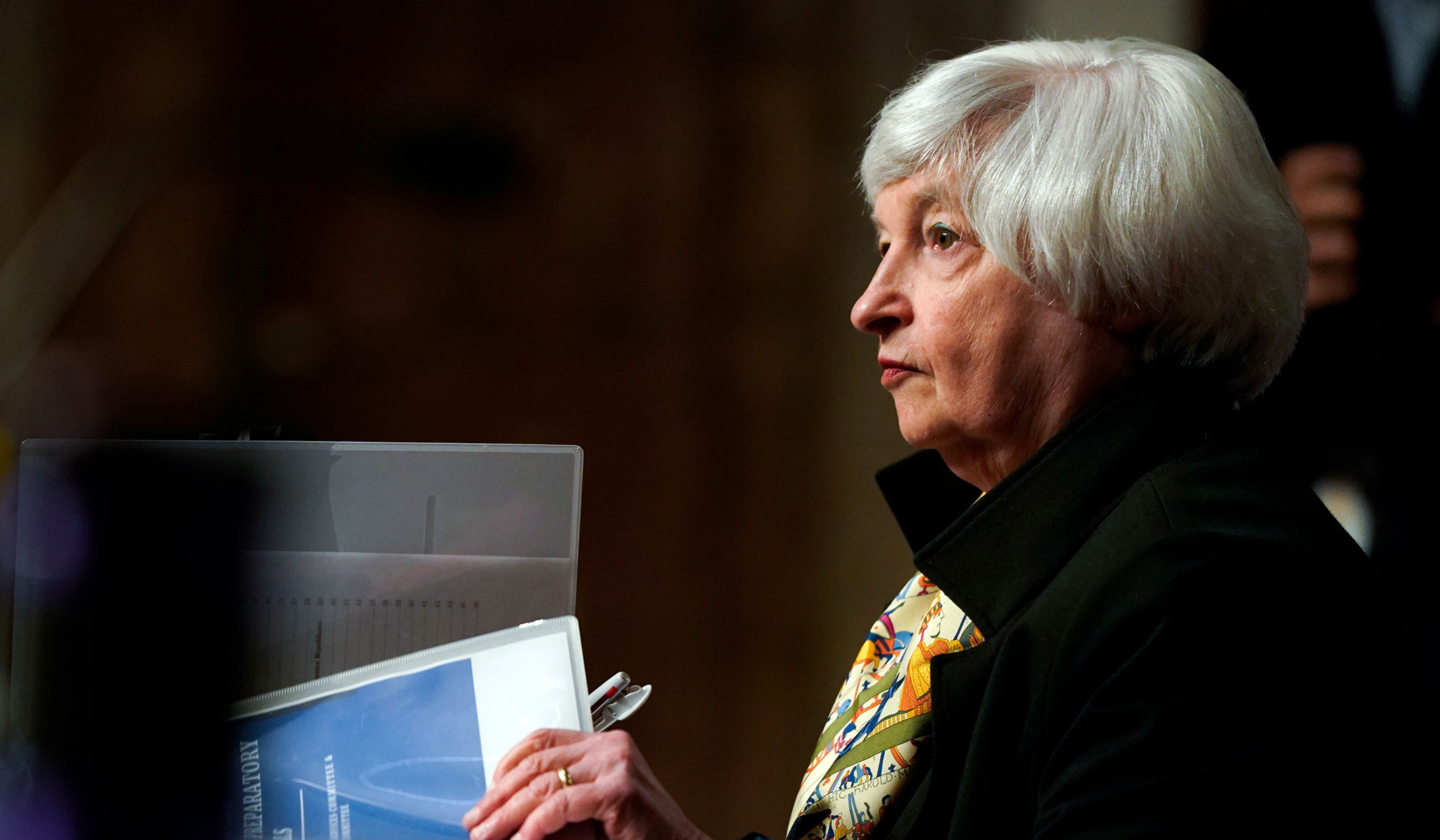
Last week’s announcement that the Federal Reserve is gearing up for a round of tightening in response to runaway inflation raised the question: Where did this inflation mess come from? To some extent, we might stop to blame the word “modern.” That word used to be grand; you would be happy to have a kitchen filled with modern appliances, or to be a modern man. But today, the word has become a weapon wielded by cancel culture’s activists. In economics, the most infamous use of the word is in the creation of “modern monetary theory” (MMT), which suggests that the government can just print money to finance runaway expenditures. There is a strong case to be made that inflation is spinning out of control right now in large part because of MMT.
MMT is to blame for two reasons. First, Democrats embraced MMT at the beginning of the Biden administration and then passed astonishingly large spending increases when the economy was near full employment. This was true at the fringe, where Representative Alexandria Ocasio-Cortez and Senator Bernie Sanders explicitly referenced the theory, but also in the establishment, where Janet Yellen asserted that it was important to “go big” with spending because inflation was easy to control. Second, if markets began to believe that policy-makers truly embraced MMT, they would expect more inflationary policies in the future. This would remove the expectations anchor that has stabilized inflation for decades. (The link between fiscal policy and inflation has been extensively explored by our own John Cochrane here and here.)
As we look ahead to a year of Federal Reserve tightening, the effectiveness of the central bank’s policy will depend both on the interest-rate sensitivity of economic activity and on the Federal Reserve’s ability to restore markets’ faith in the commitment of policy-makers to policies that restore price stability. For that, they need the Biden administration’s help. In other words, if we want to whip inflation now, the Democratic threat of continuing to use MMT as an excuse for runaway spending must be addressed as well, lest expectations be completely unmoored.
Against this backdrop, one would have to classify Treasury Secretary Janet Yellen’s Davos speech as one of the most serious policy threats to the future of our economy launched by a treasury secretary. In it, she introduced the idea of “modern supply-side economics” MSSE — unfortunately for Yellen, this will forever be (appropriately) pronounced “messy.” Indeed, instead of rejecting the word modern to address the expectations crisis, the administration is recklessly spreading it like inflationary fertilizer.
What is “modern” supply-side economics? According to Secretary Yellen it begins with the rejection of traditional Reaganesque supply-side economics that advocates a policy focus on stimulating capital formation through low taxes and deregulation. “Significant tax cuts on capital have not achieved their promised gains,” the secretary said in the speech. “And deregulation has a similarly poor track record.” On this assertion, the treasury secretary is factually challenged. As documented extensively in the 2018 and 2019 Economic Reports of the President, the academic literature decisively supports traditional supply-side economics, as does the evidence after the Trump tax cuts. Secondly, the literature and evidence also strongly support the view that deregulation has large positive economic effects.
Continuing her journey away from the facts, Yellen adds that “this approach has deepened disparities in income and wealth by shifting the burden of taxation away from capital and towards labor,” ignoring the fact that income inequality declined sharply after the Trump tax cuts.
So what’s to replace this “failed” theory? President Biden’s Build Back Better plan, evidently. Yellen argues that the bill, which doubles down on the idea that government spending can “go big,” will deliver economic growth that isn’t “just focused on achieving a high top-line growth number that is unsustainable — we are instead aiming for growth that is inclusive and green.”
Yellen then cites four agenda items that exemplify the “modern” version of the theory. The first is the enormous expansion of child-care expenditures in the BBB plan. This, she argues, will increase the labor supply because parents can go back to work supported by almost free child care. The second is the commitment to large increases in federal spending on training and education — despite the remarkable dearth of evidence that either has a positive effect on productivity. The third is the continued interest in ever more infrastructure spending. This, at least, plausibly has supply-side effects — Arthur Laffer himself never argued against bridges, so this leg of the stool hardly deserves the moniker “modern.” Finally, she argues for a higher corporate-tax burden, ignoring the literature on the negative effects it has on supply and, accordingly, on inflation.
In other words, “modern supply-side economics” is just a “messy” corollary of modern monetary theory. If you want to deliver a strong economy, let the government finance enormous spending with the printing press and high taxes. These policies, of course, will not have the desired effect, but they will run the risk of dramatically increasing inflation expectations — even if they’re not enacted. After all, Democrats may well be able to enact this agenda in the future, and, in the meantime, they will choose the members of the Board of Governors of the Federal Reserve.
Since the days of Alexander Hamilton, it has been the role of the treasury secretary to defend the value of U.S. debt — including, as Secretary Robert Rubin did so effectively, reminding Congress of the risks of runaway spending.
No more. The inflation pot is boiling, and Secretary Yellen has poured gasoline on the fire.